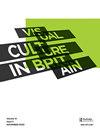Politics Personified: Portraiture, Caricature and Visual Culture in Britain, c. 1830–80 by Henry Miller
Q2 Arts and Humanities
引用次数: 0
Abstract
On the face of it, this book would seem to have little to offer anyone but the dedicated nineteenth-century specialist. Focusing on the most prominent names of the remote world of the Victorian parliament – the likes of Lord Russell and Benjamin Disraeli, Lord Palmerston and W.E. Gladstone – Henry Miller’s book is firmly attached to the elements that structure traditional British political histories. But his book also offers something to the field of visual culture in its expansive and purposeful approach to the study of portraiture. Nineteenth-century portraiture is still most familiar either through its treatment as a fine art practice proper to the walls of the Royal Academy, all swagger and grand manner oil on canvas, or as the subject of the emergent technology of mass visual culture, the photograph. The production of portraits for circulation through the established technologies of reproduction (wood and steel engraving) are less integrated into the histories of nineteenth-century visual culture, and the caricature or political cartoon perhaps even less so (with the noble exception of the ever-fascinating repertoire of Punch magazine, indiscriminately plundered for historical light relief). One major vehicle for this kind of imagery was the periodical, and the study of periodicals in this period is well established as a sub-discipline of literary studies. But the links between different formats of visual production in the period are still not so well understood. Politics Personified offers a new perspective on the close relationships that existed between different arenas of visual production by tracing how they were connected through journalism and other forms of political publicity and campaigning. Miller’s study uses the portrait genre to study a range of images from the oil portrait to earthenware drinking vessels and everything in between. The book’s 40 illustrations do not represent anything like the scope of the material that it encompasses, which often includes portraits produced in series (photographs and engraved reproductions) or portraits of numerous individuals collected in other formats (group portraits). While it would have been interesting to see a fuller selection of images reproduced, it is not essential because the arguments only sometimes concern the actual appearance (rather than the circulation) of the portraits. In the important chapter ‘Disraeli, Gladstone and the personification of party, 1868–1880 ́, understanding the connotations of the portraits of the two sitters is essential, since the argument invites us to recognize how individual politicians became visually associated with the party they led through the mechanism of depictions of their personality, and vice versa. And in his chapter ‘Reforming pantheons: Political group portraiture and history painting’, which deals with large-scale multi-figure portrait《拟人化的政治:1830 - 1880年英国的肖像、漫画和视觉文化》,作者:亨利·米勒
从表面上看,这本书似乎对任何人都没有什么帮助,除了这位专注的十九世纪专家。亨利·米勒的书聚焦于维多利亚议会遥远世界中最著名的人物——如罗素勋爵和本杰明·迪斯雷利、帕默斯顿勋爵和W.E.格莱斯顿——牢牢地依附于构成传统英国政治史的要素。但他的书也为视觉文化领域提供了一些东西,在其广泛和有目的的方法来研究肖像。19世纪的肖像画仍然是最熟悉的,因为它被当作一种艺术实践,适合挂在皇家艺术学院的墙上,所有的傲慢和宏伟的方式,或者作为大众视觉文化新兴技术的主题,照片。通过成熟的复制技术(木头和钢铁雕刻)进行流通的肖像制作很少融入19世纪视觉文化的历史,漫画或政治漫画可能更少(除了《Punch》杂志上那些永远迷人的作品,它们被不加区分地掠夺为历史轻浮雕的高贵例外)。这种意象的一个主要载体是期刊,这一时期的期刊研究已经被确立为文学研究的一个分支学科。但是,这一时期不同形式的视觉制作之间的联系仍然没有得到很好的理解。《政治人格化》提供了一个新的视角,通过追踪它们是如何通过新闻和其他形式的政治宣传和竞选活动联系起来的,来看待存在于不同视觉生产领域之间的密切关系。米勒的研究使用肖像流派来研究一系列图像,从油画肖像到陶器饮用器皿,以及介于两者之间的一切。这本书的40幅插图并不代表它所包含的材料的范围,通常包括系列肖像(照片和雕刻复制品)或以其他形式收集的许多个人肖像(集体肖像)。虽然看到更全面的图像选择被复制是很有趣的,但这不是必要的,因为争论有时只涉及肖像的实际外观(而不是流通)。在重要的一章“迪斯雷利,格莱斯顿和政党的人格化,1868-1880”中,理解两位模特肖像的内涵是必不可少的,因为该论点邀请我们认识到,个体政治家是如何通过对其个性的描绘机制与他们领导的政党在视觉上联系在一起的,反之亦然。在“改革万神殿:政治团体肖像与历史绘画”一章中,他谈到了大规模的多人物肖像
本文章由计算机程序翻译,如有差异,请以英文原文为准。
求助全文
约1分钟内获得全文
求助全文
来源期刊

Visual Culture in Britain
Arts and Humanities-Visual Arts and Performing Arts
CiteScore
0.60
自引率
0.00%
发文量
1
 求助内容:
求助内容: 应助结果提醒方式:
应助结果提醒方式:


